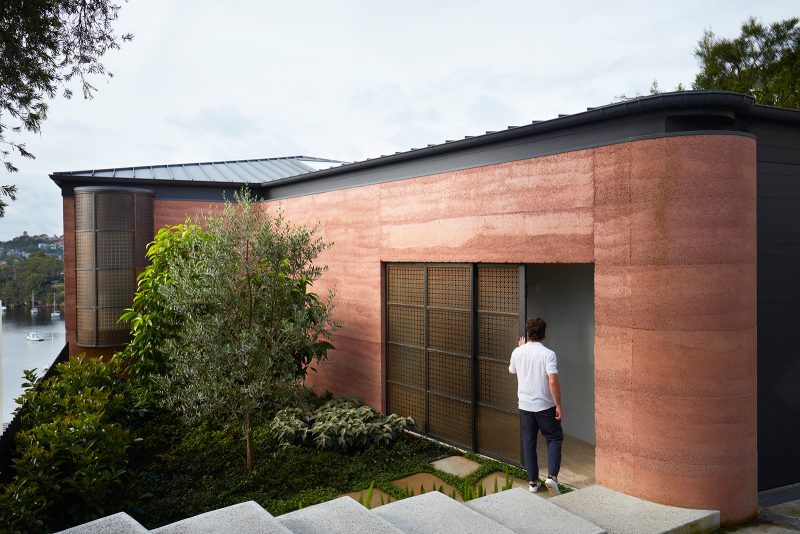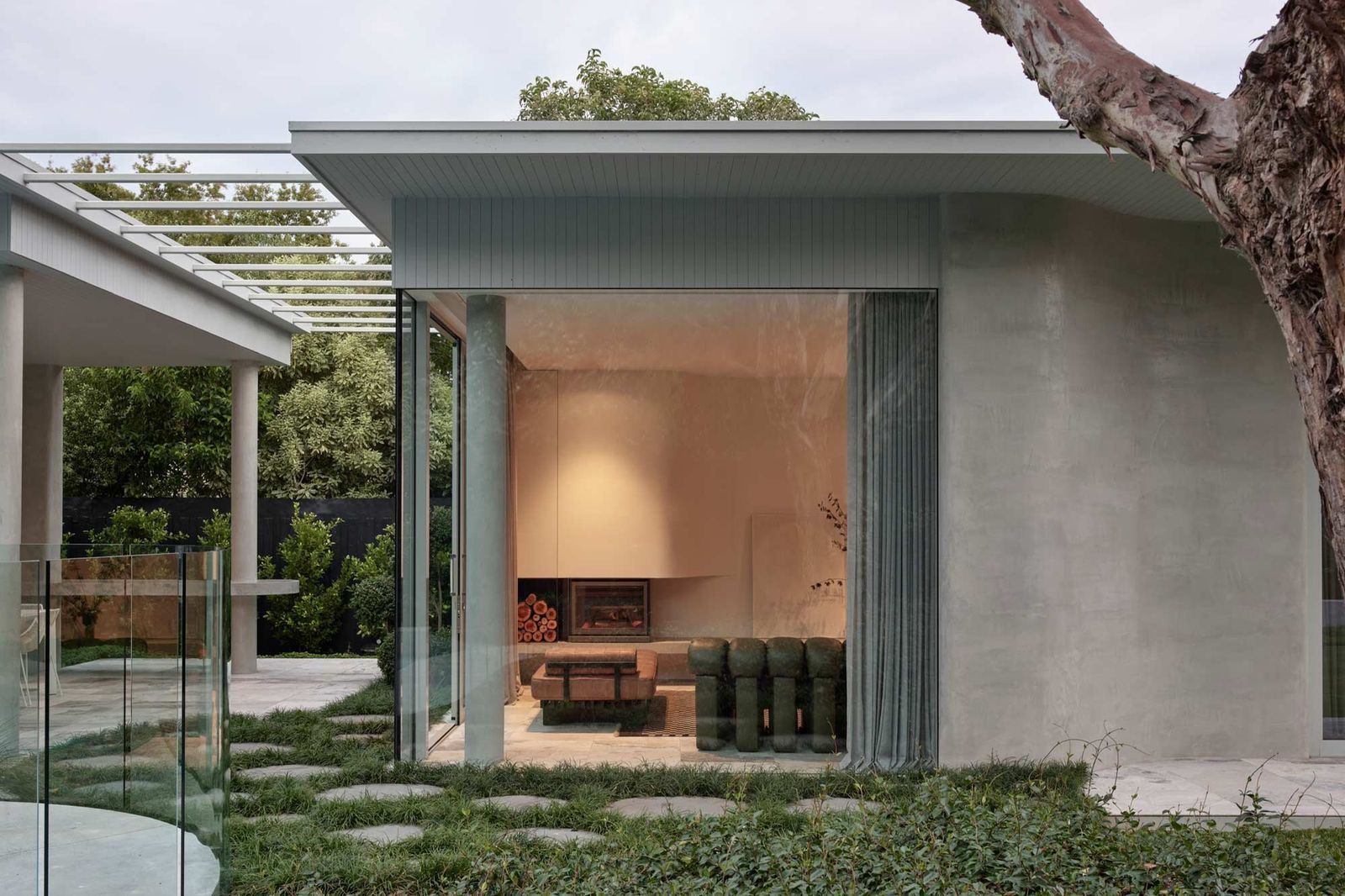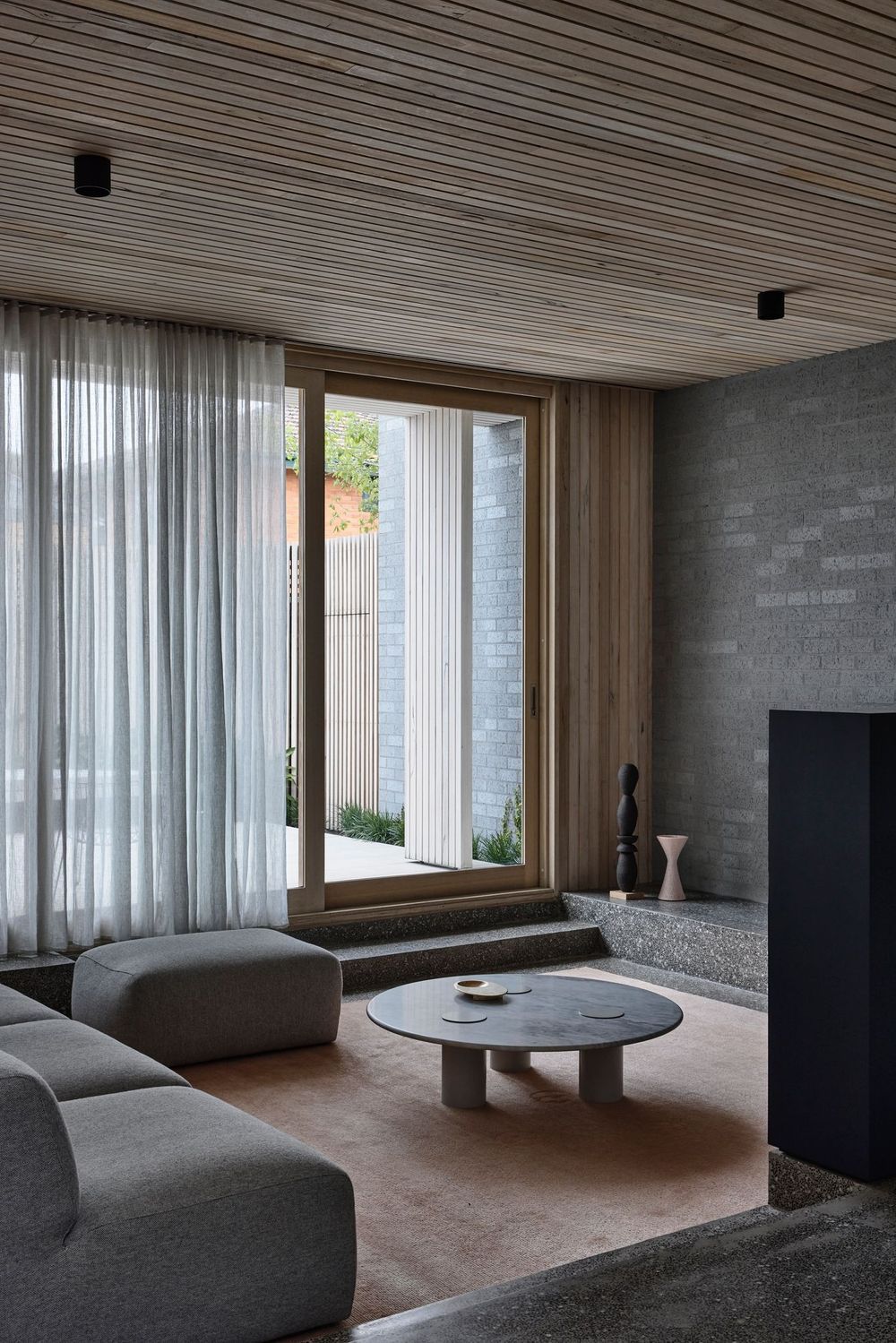
Do you ever wonder what it takes to design the mesmerising Sydney Opera House or the awe-inspiring Eureka Tower in Australia? Architects are the skilled professionals behind these architectural marvels, with their creativity, technical skills, and passion for turning dreams into reality. In this blog post, we will unlock the secrets of the architectural profession in Australia, exploring the roles, responsibilities, and the path to becoming an architect. Let’s delve into the world of architectural wonders and discover what it takes to shape the built environment around us.
Short Summary
- Architects design & oversee building projects with creativity, technical skills and client relations.
- Becoming an accredited architect in Australia requires a degree, experience & passing the Architectural Practice Examination to register in a local state or territory.
- Architects provide services like consultation/design, sustainability considerations and master planning to improve our built environment.
The Role of Architects

An architect is a creative professional who designs and oversees building projects, ensuring that they are constructed according to industry standards and codes. Practising architecture means providing services related to designing buildings and the space around them, assisting clients throughout the process, and even acting as a project manager or client representative. Architects are responsible for creating functional, aesthetic, and inspiring spaces, whilst considering factors like budget, legislation, and environmental impact.
This profession is extremely diverse, with architects working on various types of projects, including:
- Residential homes
- Large commercial buildings
- Public infrastructure
- Educational institutions
- Healthcare facilities
- Cultural and recreational spaces
To bring a project vision to life, architects typically collaborate and coordinate with other building and construction professionals, ensuring that their expertise contributes to the successful completion of projects.
Architectural Design
Design is the heart of an architect’s work, and it is a complex and iterative process that involves creativity, problem-solving, and technical skills. Architects have to consider factors like budget, state and local legislation, town planning, and environmental impacts when designing projects. To tackle design challenges, they often use tools like computer-aided design (CAD) software, which allows them to communicate and visualise their ideas and make adjustments as needed.
Communication and management skills are also crucial for architects, as they need to present their ideas to clients and collaborate with other professionals to ensure the project’s success. By having a strong foundation in architectural design, architects can create structures that are not only functional and visually appealing, but also sustainable and compliant with regulations.
Collaborating with Other Specialists
A successful building project is the result of effective teamwork and coordination, and architects are at the centre of this collaborative process. Architects are traditionally the lead consultant in this process, and work closely with the following experts to achieve the desired results:
- Engineers
- Building designers
- Surveyors
- Trades People
- Artists & Photographers
- Project Managers
- Community Groups & Stakeholders
- Lawyers
- Accountants
- Plant Operators
- & many other specialists
This collaboration fosters efficiency, better quality of work, and cost savings, and forms a key process in de-risking a project as it progresses through required stages.
Project Management and Client Relations
Architects are more than just designers; they are also responsible for managing projects from conception to completion, advising clients, and overseeing the work of other specialists involved. Embracing new technology, improving communication, having project management from the start, and staying on top of industry trends are all essential for successful project management in Australia. By mastering these skills, architects can ensure that their projects are completed on time, within budget, and to the highest quality standards.
Project management is a complex process, but with the right skills and knowledge, architects can ensure a successful project outcome.

The Path to Becoming an Architect in Australia

It's important to note that the title 'architect' is protected by law and requires registration under each state and territory legislation (Architects Act). This legislation is enacted to protect consumers and provide a framework for registered architects to practice. To become a registered architect in Australia, architects delve into a diverse array of subjects, encompassing design, technology, architectural history, philosophy, communication, environmental sustainability, and professional practice. Typically they must complete the following steps:
- Completed a higher education degree that leads to an accredited Master of Architecture (or accepted equivalent)
- Gain a minimum two years of practical experience.
- Pass the Architectural Practice Examination which is a 3 part process that is administered by the statutory authority for each jurisdiction.
These steps are necessary to become an accredited architect in Australia.
Architectural Education
Architectural education in Australia is regulated by the Architects Accreditation Council of Australia (AACA), which sets the National Standard of Competency for Architects (NSCA). The NSCA ensures that architects meet the necessary professional skills and knowledge before they can register in Australia. It encompasses the main activities that are essential to the practice of architecture and in terms of which an architect is supposed to show competence in providing professional services.
The Architecture Programme Accreditation Procedure in Australia and New Zealand is a peer review process that ensures the quality of architectural education. By adhering to the NSCA and following the accreditation procedure, architectural education programmes in Australia maintain a high standard of excellence, preparing future architects to succeed in their profession.
In 2023 the AACA has established a mutual recognition agreement and reciprocal recognition are designed to recognise the professional credentials of architects licensed/registered in different countries and support their mobility by creating the opportunity to practise beyond their borders.
Australia has mutual recognition agreements or reciprocal recognition with the following countries/economies at present:
- Canada
- Japan
- Singapore
- United States
- United Kingdom
Practical Experience
Practical experience is a crucial component of becoming an architect, as it allows aspiring professionals to apply their knowledge in real-world settings. Some ways to gain practical experience include:
- Internships and work experience
- Structured programs that provide hands-on experience in a supervised setting
- Learning from experienced professionals and receiving tips and guidance
These opportunities can help aspiring architects develop their skills and build a strong foundation for their career.
Networking is also essential when looking for job opportunities, as it allows aspiring architects to create connections with potential employers and learn about job openings that might not be posted publicly. Gaining practical experience not only enhances an architect’s skills, but also opens doors to future career opportunities.
Architectural Practice Examination
The Architectural Practice Examination is the primary pathway to becoming a registered architect in Australia. This national test assesses the candidate’s knowledge and understanding of architecture in Australia and their ability to use professional skills. Passing the Architectural Practice Examination demonstrates that an individual has met the necessary standards and is ready to practise architecture professionally in Australia.
It is a crucial milestone in an architect’s journey, ensuring that the profession maintains a high level of quality and competence.
Architectural Services: Beyond Building Design

Architects offer a range of services beyond building design, including consultation, sustainable design, and masterplanning. Clients often seek the expertise of architects for guidance on building regulations, design and construction techniques, and materials selection. Architects also focus on sustainable design practices, incorporating energy efficiency, water conservation, and green building materials into their projects.
In addition to designing buildings, architects play a significant role in:
- Urban planning and master planning consultation
- Landscape architecture and designing outdoor spaces in collaboration with landscape architects
- Interior design and architecture
- Collaborating with other professionals to create functional, aesthetically pleasing environments
Through their diverse range of services, architects contribute to the improvement of our built environment and the enhancement of our daily lives.
Consultation and Design Services

Consultation and design services involve working closely with clients to understand their needs and develop tailored solutions. By following the Office of Indigenous Affairs’ guidance, participating in consultation periods, and providing feedback on design reforms and guidelines, architects ensure that their designs meet the requirements of the client and comply with local regulations. They also provide advice to clients throughout the process.
These services not only enhance communication between the architect and the client, but also allow architects to create customised solutions that satisfy the client’s needs and expectations.
Sustainability and Environmental Considerations
Sustainability and environmental considerations are becoming increasingly important in architecture, as architects strive to design buildings that are energy efficient and have minimal environmental impact. In Australia, architects implement strategies and programs to tackle climate change and protect the environment, such as:
- Conducting environmental audits
- Setting up environmental management systems
- Addressing key sustainability issues like water availability, waste management, and resource efficiency
By integrating these eco-friendly practices into their designs, architects contribute to a greener and more sustainable built environment.
Urban Planning and Landscape Architecture
Urban planning and landscape architecture involve designing outdoor spaces and working with other professionals to create functional, aesthetically pleasing environments. Collaboration between different disciplines, such as:
- Architecture
- Landscape architecture
- Urban planning
- Engineering
is essential for a comprehensive approach to the design process.
By keeping up with the latest trends and advancements in the field, architects can develop innovative designs that enhance the quality of life in urban areas and contribute to the creation of sustainable and vibrant communities.
Key Skills for Success in Architecture

To excel in the architectural profession, there are several key skills that architects must possess, including technical proficiency, creativity, problem-solving, communication, and management skills. These skills enable architects to develop innovative solutions to complex design challenges, collaborate effectively with clients and other professionals, and manage projects from start to finish.
Technical proficiency is essential for architects, who need to create accurate drawings, use specialised software, and understand building codes and regulations. Creativity and problem-solving skills allow architects to think outside the box and come up with unique design solutions.
Communication and management skills are crucial for effective collaboration with clients and other professionals, as well as overseeing projects from conception to completion.
Technical Proficiency
Technical proficiency is a vital skill for architects, as it enables them to use specialised software, navigate building codes and regulations, and produce precise drawings. Staying up-to-date with the latest technologies and data visualisation techniques is essential for success in the field.
By continuously upskilling and mastering the latest IT skills, architects can showcase their technical expertise in interviews and excel in their profession.
Creativity and Problem Solving
Creativity and problem-solving skills are indispensable for architects, as they enable them to develop innovative solutions to complex design challenges. Some of the best ways to foster creativity and solve problems in the architectural profession include:
- Teaching problem-solving strategies
- Collaborating with others
- Thinking critically and creatively
- Communicating effectively
By utilising these strategies, architects can enhance their creativity and effectively solve design problems.
By encouraging innovation in the workplace and promoting a culture of creative leadership, architects can tackle design issues with fresh ideas and original solutions.
Communication and Management Skills
Communication and management skills are crucial for architects, as they need to effectively collaborate with clients and other professionals, as well as manage projects from start to finish. Some key skills for architects include:
- Honing listening skills
- Being mindful of emotions in communication
- Mastering non-verbal techniques
- Clear and succinct presentation of information
These skills are essential for successful communication and project management in the field of architecture.
By building strong workplace relationships based on trust and respect, architects can create a supportive and collaborative environment that leads to successful project outcomes.
The Australian Institute of Architects: Supporting the Profession

The Australian Institute of Architects (AIA) is an organisation that represents nearly 14,000 members worldwide, dedicated to improving design standards and creating better-built environments for everyone. The AIA’s goal is to benefit all Australians by promoting quality, responsible, and sustainable design, and advocating for the architectural profession.
With resources, news, events, and awards, the AIA celebrates and recognises exceptional work in architecture and provides support for its members.
Membership Benefits
Membership in the Australian Institute of Architects offers numerous benefits, including:
- Access to professional development courses
- Mentoring programs
- Networking events
- Access to local and international professional associations
- Industry groups
- Policy & Advocacy
Members can take advantage of these benefits to enhance their professional growth and network with other professionals in the field.
Furthermore, the AIA provides support for emerging architects through scholarships, grants, and mentoring programs, helping to shape the future of the architectural profession.
Policy and Advocacy Efforts
The Australian Institute of Architects advocates for the profession, working to ensure quality and safety outcomes in the building and construction industry. The AIA has developed Guidelines for EOI and RFT for architectural services to assist clients in navigating the process and ensuring quality outcomes.
Additionally, the AIA supports the DBP Act and Regulation, which aim to improve public trust and quality in the building and construction industry. Through these policy and advocacy efforts, the AIA helps maintain high community standards and supports the ongoing growth and development of the architectural profession.
The captivating world of architecture in Australia, diving deep into the roles, responsibilities, and the path to becoming an architect. We have discovered the essential skills required for success in this profession, such as technical proficiency, creativity, problem-solving, communication, and management skills. We have also looked at the important work of the Australian Institute of Architects in supporting the profession, promoting quality and sustainability, and advocating for the architectural community.
As we have seen, architects play a crucial role in shaping the built environment around us, turning dreams into reality through their creativity, expertise, and passion. Whether designing residential homes or iconic landmarks, their work leaves a lasting impact on our lives and the world we live in. So, the next time you marvel at a stunning building or a beautifully designed space, take a moment to appreciate the brilliant minds behind it – the architects who make it all possible.
Frequently Asked Questions
What do architects do?
Architects design and plan buildings and spaces to meet safety standards, creating attractive structures that are functional and sustainable. They also specialize in houses, commercial buildings, interiors, and outdoor spaces, utilising their organisational and drawing skills to manage contracts.
How much do architects get paid in Australia?
The average salary for an experienced registered architect in Australia is around $110,000, ranging from $80,000 to $150,000 depending on experience and qualification.
Entry-level salaries for graduates of architecture start at $57,500 per year, with experienced graduates of architecture earning up to $90,000 annually.
Is it hard to study architecture?
Studying architecture can be challenging, as it requires a great deal of time management skills to balance between different tasks. However, with the right decisions and dedication, you can make studying architecture more manageable.
Time management is key to success in architecture. You need to plan ahead and prioritise tasks to ensure that you are able to complete all of your assignments on time. Additionally, it is important to set aside space.
What is the role of an architect in Australia?
In Australia, architects are responsible for designing, planning, and managing building projects, while collaborating with various specialists to make sure the project is successful.
They must be knowledgeable in a variety of areas, including structural engineering, construction, and building codes. They must also be able to work with clients to ensure their vision is realised. Additionally, they must be able to work with contractors.









